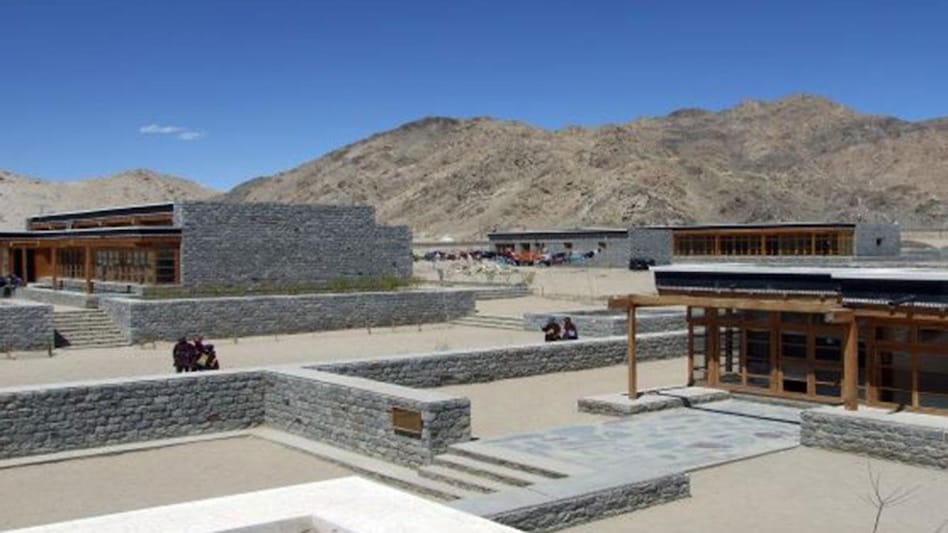 India has been maintaining that its ties with China cannot be normal unless there is peace in the border areas.
India has been maintaining that its ties with China cannot be normal unless there is peace in the border areas.
 India has been maintaining that its ties with China cannot be normal unless there is peace in the border areas.
India has been maintaining that its ties with China cannot be normal unless there is peace in the border areas.The Indian government has told China that bilateral ties could only resume after the present state of emergency management of the border in East Ladakh was replaced by normalised border management by the PLA. India has demanded that friction points at Depsang Plains in Daulet Beg Oldi (DBO) sector and Demchok area including Charding Ninglung Nullah (CNN) sector should be removed before normal talks can resume, a report in Hindustan Times said.
India-China defence ministers have been holding a series of meetings in this regard. During the 18th round of military dialogue this week, Beijing conveyed to New Delhi that “the border has normalised in East Ladakh”, and hence bilateral relations should be restored to pre-May 2020 level.
But Beijing’s stand is contrary to its official statement after the 26th meeting of the Working Mechanism for Consultation and Coordination on China-India Border Affairs on February 22, 2023, according to the report.
The 18th round of the Corps Commander-level talks took place days ahead of Chinese Defence Minister Li Shangfu's planned visit to India to attend a meeting of the Shanghai Cooperation Organisation (SCO).
The press release on the meeting shared by the Chinese Embassy in Beijing stated: “The two sides discussed other measures to further ease the border situation and agreed to make efforts in promoting the border situation to the phase of normalized management and control.” This means that the border management in East Ladakh was still in a transitional stage and the situation could only normalize after the PLA restored the status quo in Depsang and Demchok.
The PLA, on its part, has said that Depsang and Demchok are legacy issues that pre-date May 2020 Chinese Army transgressions in Galwan, Khugrang, Gogra-Hot Springs and Pangong Tso.
On the other hand, Indian officials have made it clear that till such time the two issues are not resolved, it cannot be business as usual with China.
It is to be noted that both countries have deployed around 50,000 troops with missiles, rockets, and artillery along the 1597 km Line of Actual Control in East Ladakh with fighters on standby since PLA aggression of May 2020.
Earlier this week, at the 18th round of talks between senior military commanders since the start of the April 2020 LAC crisis, India and China claimed that both sides held “frank and in-depth” talks on the two remaining friction areas on the Line of Actual Control (LAC). The talks were held at the Chushul-Moldo border meeting point on the Chinese side of the LAC in eastern Ladakh.
In a press statement issued on Monday stated: “The two sides had a frank and in-depth discussion on the resolution of the relevant issues along the LAC in the Western Sector so as to restore peace and tranquillity in the border areas, which will enable progress in bilateral relations. In line with the guidance provided by the State leaders and further to the meeting between the two Foreign Ministers in March 2023, they had an exchange of views in an open and candid manner.”
India has been maintaining that its ties with China cannot be normal unless there is peace in the border areas.
On March 2, External Affairs Minister S Jaishankar held talks with his Chinese counterpart Qin Gang on the sidelines of a conclave of G20 grouping in New Delhi.
At the talks, Jaishankar conveyed to Qin that the state of India-China relations is "abnormal".
Sunday's military talks came around four months after the last round of the dialogue between the senior Army commanders of the two sides.
In line with a decision taken at the 16th round of military talks, the two sides carried out disengagement from Patrolling Point 15 in the Gogra-Hotsprings area in September last year.
India-China relations
The Indian government has been firm on its position vis-à-vis the LAC in the western, middle, and eastern sectors and has clearly said that it has no intentions of budging on the steps that are needed to restore peace and tranquility on the 3,488 km LAC.
Relations between the two major Asian economies nosedived since 2020, barring the record bilateral trade figures reported in 2021 and 2022 with India’s imports of Chinese goods reaching record highs.
Also read: ‘Few acquisitions will be done’: N Chandrasekaran gives a peek into Tata Group’s semiconductor plans
Also read: EAM Jaishankar unlikely to meet Pakistan FM Bilawal Bhutto at SCO Summit: Report